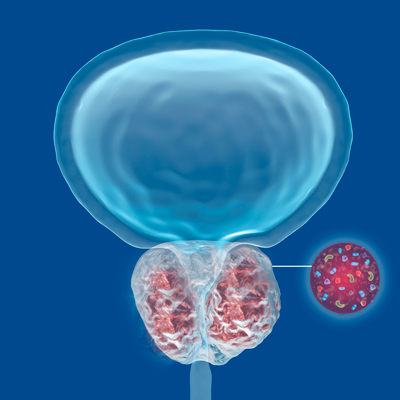Prostatitis
The prostate gland is a small gland located underneath the bladder in men. The prostate gland is responsible for secreting an enzyme that liquefies the semen and fluid that protects sperm as it moves towards fertilizing an egg in the female genital tract.
When this gland becomes inflamed or swollen it is called Prostatitis. It typically manifests itself by uncomfortable symptoms, including pain, difficulty to urinate and sometimes flu-like symptoms.
The causes of inflammation may differ amongst men and this leads to different classification of Prostatitis.
Signs and Symptoms
Signs and symptoms that you may experience if you have Prostatitis include:
An uncomfortable sensation when urinating (sometimes described as a burning sensation)
Difficulty urinating - urine flow problems, such as dribbling and hesitancy starting the flow
Increased need to urinate during the night (Nocturia)
Foul-smelling urine
Cloudy looking urine
Blood in the urine
Pain in the abdomen and the lower back
Discomfort and pain in the groin area, penis or testicles and the perineum (the area between the scrotum and rectum)
Pain during or after ejaculation
Flu-like signs and symptoms (with Bacterial Prostatitis)
Several type of Prostatitis have been described depending on presentation sign and symptoms and evolution: The NIH classification of prostatitis syndromes includes:
Category I: Acute Bacterial Prostatitis (ABP) which is associated with severe prostatitis symptoms, systemic infection and acute bacterial UTI
Category II: Chronic Bacterial Prostatitis (CBP) which is caused by chronic bacterial infection of the prostate with or without Prostatitis symptoms and usually with recurrent UTIs caused by the same bacterial strain
Category III: Chronic Prostatitis/Chronic Pelvic Pain Syndrome which is characterized by chronic pelvic pain symptoms and possibly voiding symptoms in the absence of UTI
Category IV: Asymptomatic Inflammatory Prostatitis (AIP) which is characterized by prostate inflammation in the absence of genitourinary tract symptoms
Treatment
Category I: Acute Bacterial Prostatitis (ABP)
Antimicrobial therapy antibiotic
Urinary drainage
Prostatic abscess drainage
Category II: Chronic Bacterial Prostatitis (CBP)
Antimicrobial therapy
Alpha-blockers medication for urinary symptoms
Surgery for refractory case
Chronic Prostatitis/Chronic Pelvic Pain Syndrome (NIH category III)
Multimodal therapy uniquely designed for each individual patient including: pharmacotherapy, physical and psychosocial approaches being integrated into a holistic treatment program
Depending on the symptoms at presentation, the following may be considered:
An α‐blocker and/or an NSAID
An agent targeting neuropathic pain (e.g. pregabalin)
A 5α‐reductase inhibitor (predominantly for patients with coexisting LUTS with BPE)
Consultation with pain specialist, physiotherapist, cognitive behavioral/psychological therapist and sexual health specialist

